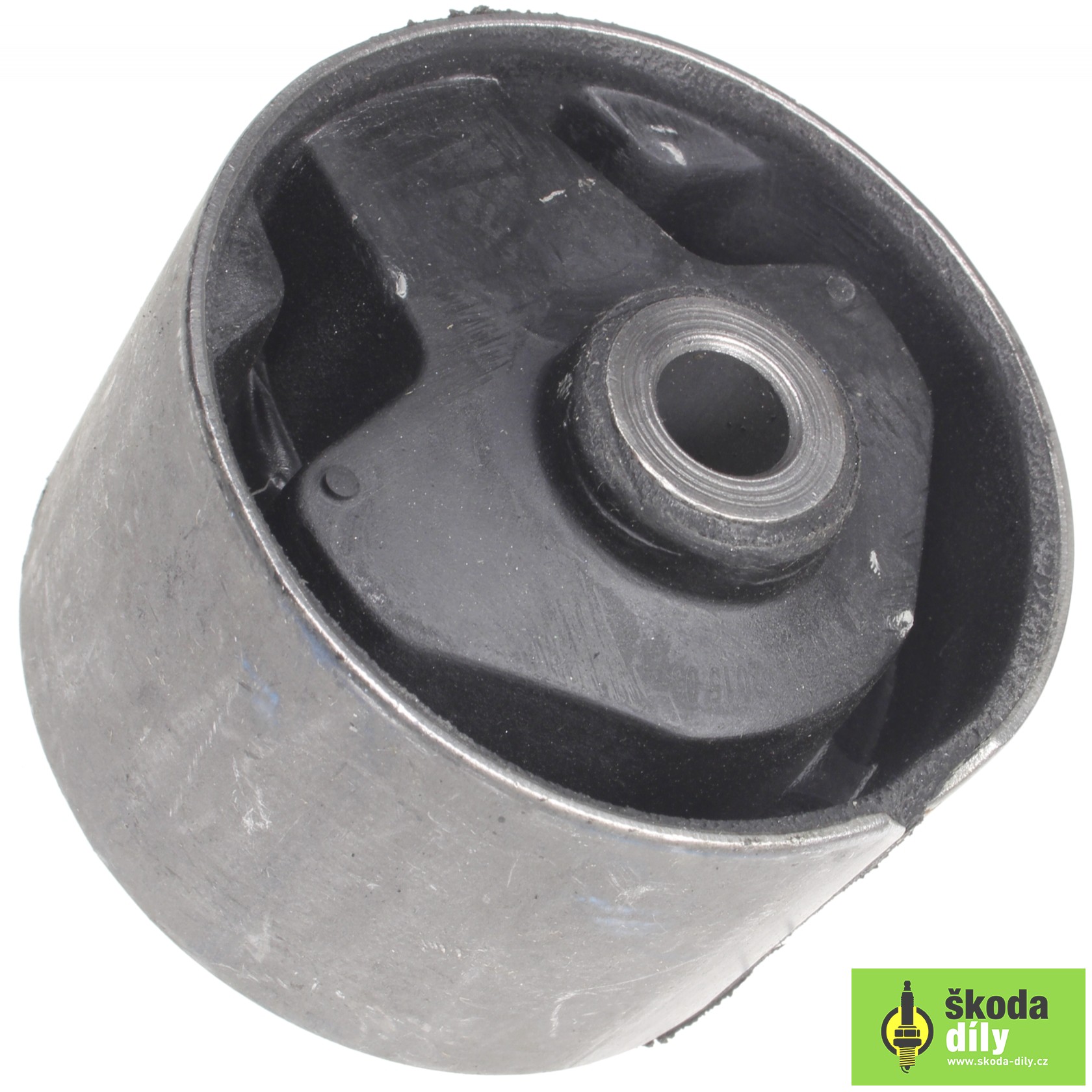"Metalastik" bushes in suspension arms usually work in torsion of the rubber for movement. The central boss is usually clamped tight to one part and the outer shell pressed tight in the other part. When rotary movement takes place the rubber essentially flexes in shear round the bush, giving torsional movement of the assembly.
Of course the rubber will also accommodate movement in the other directions too, making a generally compliant joint, which is why they are so useful. The linear stiffnesses in the different directions can be tailored by selecting different sections, you will often see holes or dimples in the rubber for different stiffnesses, or the assembly is not concentric. This example is for linear movement, not torsional, but shows the idea. A torsional bush would be symmetrical.

Rubbers will normally tolerate only a certain amount of shear strain, the radial thickness of the rubber is thus determined by the rotational angle required. Then the rubber compound and the length etc give the stiffness and load bearing capacity.
I would certainly expect for a panhard rod using metalastik bushes that the end centre bushes would be fully clamped tight to the body and suspension brackets. Bolt fits are usually fairly slack for assembly purposes, any looseness of the clamping will result in knocks and wear of the faces and holes.
It is good practice to tighten the bolts when the system is loaded in its neutral state, i.e. with the car sitting on its wheels. This means the bushes are working each way from the neutral or unstressed state which prolongs the life of the rubber, but garages seldom do this, they just tighten them wherever they are when they fit the item (suspension fully dropped often).
